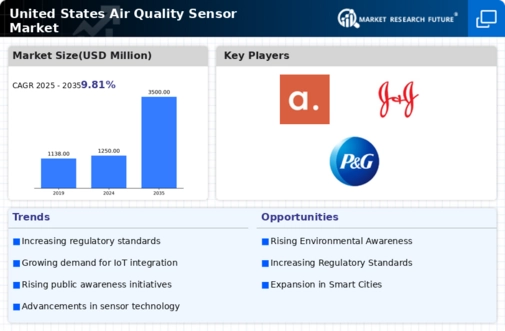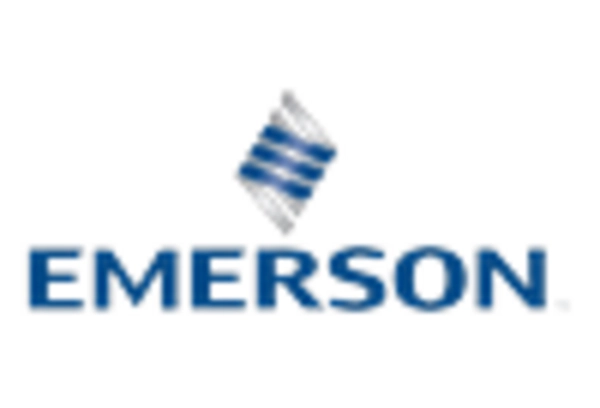Increasing Urbanization
The trend of increasing urbanization in the United States is a pivotal driver for the air quality-sensor market. As more individuals migrate to urban areas, the demand for monitoring air quality intensifies. Urban environments often experience higher levels of pollution due to traffic, industrial activities, and construction. Consequently, municipalities and organizations are investing in air quality sensors to assess and manage pollution levels effectively. According to recent data, urban areas account for approximately 80% of the US population, which correlates with a heightened need for air quality monitoring solutions. This urban-centric focus on air quality management is likely to propel the air quality-sensor market forward, as stakeholders seek to ensure healthier living conditions for residents.
Government Initiatives and Funding
Government initiatives aimed at improving air quality are playing a significant role in driving the air quality-sensor market. Federal and state agencies are increasingly allocating funds to support air quality monitoring projects, particularly in areas with high pollution levels. For instance, the Environmental Protection Agency (EPA) has established programs that provide financial assistance for the deployment of air quality sensors in vulnerable communities. This funding not only facilitates the acquisition of advanced monitoring technologies but also encourages local governments to prioritize air quality management. As a result, the air quality-sensor market is expected to benefit from these initiatives, fostering growth and innovation in sensor technologies.
Health Concerns Related to Air Quality
Growing health concerns associated with poor air quality are significantly influencing the air quality-sensor market. Research indicates that air pollution is linked to various health issues, including respiratory diseases, cardiovascular problems, and even premature mortality. The Centers for Disease Control and Prevention (CDC) has reported that air quality directly impacts public health, leading to increased healthcare costs. As awareness of these health risks rises, both consumers and businesses are more inclined to invest in air quality monitoring solutions. This trend is expected to drive the air quality-sensor market, as individuals and organizations prioritize health and safety by utilizing advanced sensors to monitor and mitigate air pollution.
Technological Integration in Smart Cities
The integration of air quality sensors into smart city initiatives is emerging as a crucial driver for the air quality-sensor market. As cities across the United States adopt smart technologies, the need for real-time air quality monitoring becomes increasingly apparent. Smart city projects often incorporate IoT devices, enabling seamless data collection and analysis. This technological synergy allows for proactive measures to be taken in response to air quality fluctuations. The market for smart city solutions is projected to reach $1 trillion by 2025, indicating a substantial opportunity for the air quality-sensor market to thrive within this framework. The collaboration between urban planners and technology providers is likely to enhance the effectiveness of air quality management.
Rising Demand for Indoor Air Quality Monitoring
The rising demand for indoor air quality monitoring is emerging as a key driver for the air quality-sensor market. With an increasing number of individuals spending significant time indoors, concerns regarding indoor air quality have escalated. Factors such as volatile organic compounds (VOCs), allergens, and particulate matter can adversely affect health and well-being. Consequently, both residential and commercial sectors are seeking effective solutions to monitor and improve indoor air quality. The market for indoor air quality sensors is projected to grow at a CAGR of 10% through 2027, indicating a robust opportunity for the air quality-sensor market. This trend underscores the importance of comprehensive air quality management strategies that encompass both outdoor and indoor environments.
















Leave a Comment